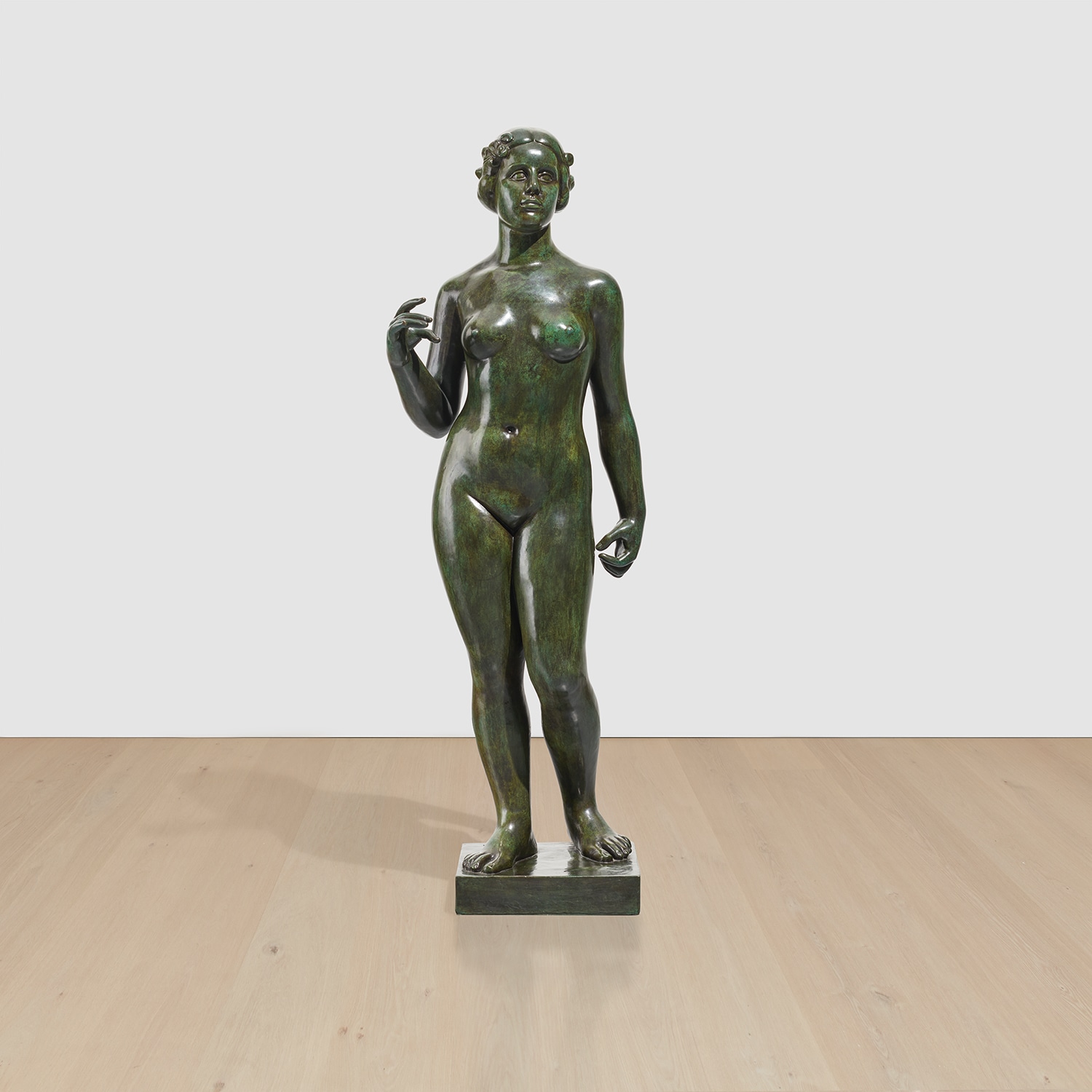



168Ο◆
Aristide Maillol
La nymphe aux fleurs
incised with the artist's monogram on the top of the base; incised with the foundry mark and inscribed "Épreuve D'Artiste Alexis Rudier Fondeur Paris" along the lower edge of the base
bronze
62 x 20 x 15 1/2 in. (157.5 x 50.8 x 39.4 cm)
Conceived in 1931 and cast by the Alexis Rudier Foundry in Paris before 1952, this work is an artist's proof from an edition of 6 plus 4 artist's proofs.
The authenticity of this work has been confirmed by the late Dina Vierny.
The authenticity of this work has been confirmed by the late Dina Vierny.